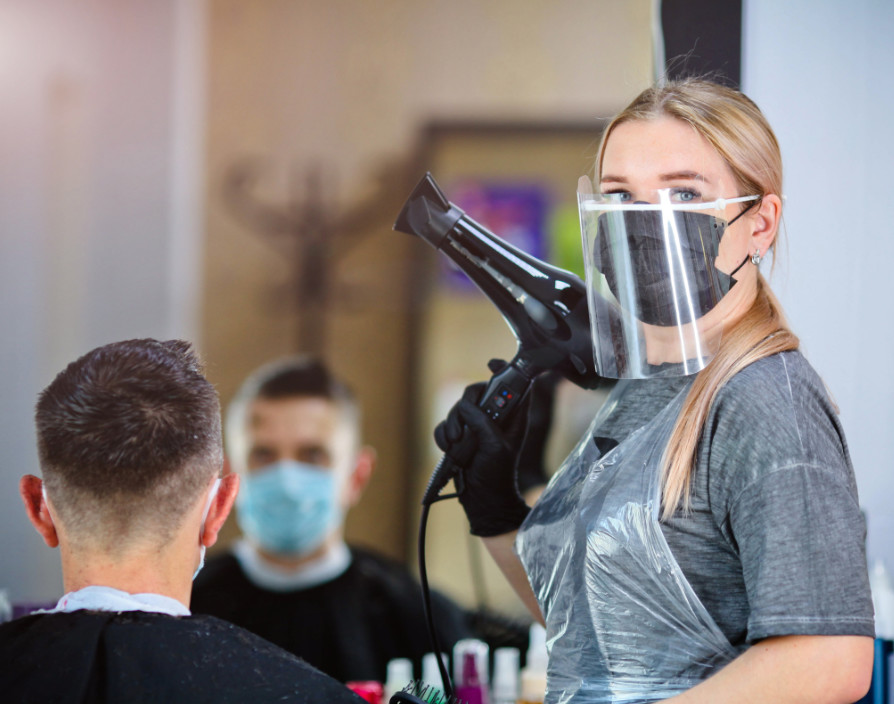The coronavirus pandemic continues to significantly affect the hair and beauty industry, with many struggling to adapt to the sudden changes that have affected how businesses are run, and hugely disrupted day-to-day operations.
Whilst the government has established a number of schemes to support UK businesses, such as VAT cuts, Eat Out To Help Out, and the employee retention scheme, as a predominantly self-employed industry those in the hair and beauty world have been mainly left to look after themselves. For an industry that contributes £6.6 billion to the UK economy1 with a large High Street presence, this has been a bitter pill to swallow and left many professionals feeling frustrated.
According to a poll by the NHBF2, the largest trade association for the hairdressing, barbering and beauty industry, salons are doing an excellent job minimising the spread of COVID-19 despite offering close contact services. Yet, salon owners remain fearful that their businesses may have to close their doors again, with little to no support from the government to see them through these difficult times.
Takings have also been affected. Restrictions have limited passing trade opportunities and social distancing and heightened hygiene guidelines, mean salons are servicing fewer clients each day to give time for clean down. To survive, hair and beauty professionals have embraced digital platforms to diversify their services to overcome barriers to service and create additional income streams.
When the country entered lockdown in March, many hair and beauty businesses began operating an ecommerce business, selling aftercare products to their customers. With customers unable to visit the salon, these businesses were able to make sales and serve their clients. Even after salons reopened in July, ecommerce has remained an active business component, topping-up in-store revenue and enabling them to cope better if another lockdown were to hit the industry.
Encouragingly, hair and beauty professionals also developed creative ways to serve their customers throughout the pandemic. From offering custom DIY hair and nail colour kits and telephone consultations to running virtual tutorials, it is testament to the industry’s ability to adapt, taking a typically non-digital product and exploiting technology to maintain contact with clients. While these may not work in the long term, they enabled clients to achieve a decent finish at home and prevented potential damage. and finding solutions to keep servicing their customers. For a more permanent revenue stream, salons may consider developing their own product, which could be sold nationwide and grow their business beyond their local community.
As tightening coronavirus restrictions increase business concerns and Tier 3 becomes a reality for many, social media will play a key role to maintain customer relations and drive new sales. An aesthetic industry, Facebook and Instagram have always been popular platforms for hair and beauty consumers and businesses can build on this interest to open new sales opportunities. Social media also offers channels of communication to reassure consumers concerned about new measures, enabling salons to share their new systems and hygiene measures ‘ which may also appeal to new clients. For salons able to offer discounts and deals, social media advertising allows hyper targeting, ensuring that for minimal spend is directed towards people who are closest to or most likely to buy.
The future for the hair and beauty sector may seem uncertain, however it has proved to be a very resilient industry in the past, with cosmetic and beauty industries often recovering at a faster rate than others. However, with less support from the UK government than other industries, salon owners and beauty professionals are rightly concerned.
Undoubtedly, this creative industry will find its feet again, but it will take time as business models and practices that previously worked well will need to adapt, potentially forever. For example, the era of the walk-in appointment is likely to be a thing of the past, which will require a huge adjustment from barbers in particular. Equally, pricing will need to be closely monitored, as the cost of business increases with additional cleaning products and PPE required.
The hair and beauty industry is full of smart, savvy business men and women but greater emphasis on developing business skills will prove vital for this industry, which traditionally focuses training on technical ability rather than commercial acumen. This growing sector proved successful in the wake of the 2008 recession and can play a valuable role in Britain’s post-pandemic economic recovery. It’s time that the government supports this industry recovery and celebrates its entrepreneurial spirit, recognising the fantastic career opportunities it offers.
References: https://drive.google.com/file/d/1puB_bNY-in48RybtPqoHceeyrlBo3lmj/view
1 Economic Impact Assessment Report of the Hair and Beauty Sector on the UK Economy Report, Hair & Barber Council in partnership with Babtac, May 2019
2 NHBF, October 2020 ‘ The survey monitored the rate at which salons had been contacted by track and trace systems to notify them about a positive case of Covid on their premises: 88% of respondents in England, 92% in Scotland, 94% in Wales, and 96% in Northern Ireland had not been contacted. https://britishbeautycouncil.com/nhbf-social-survey/
“
Share via:








































